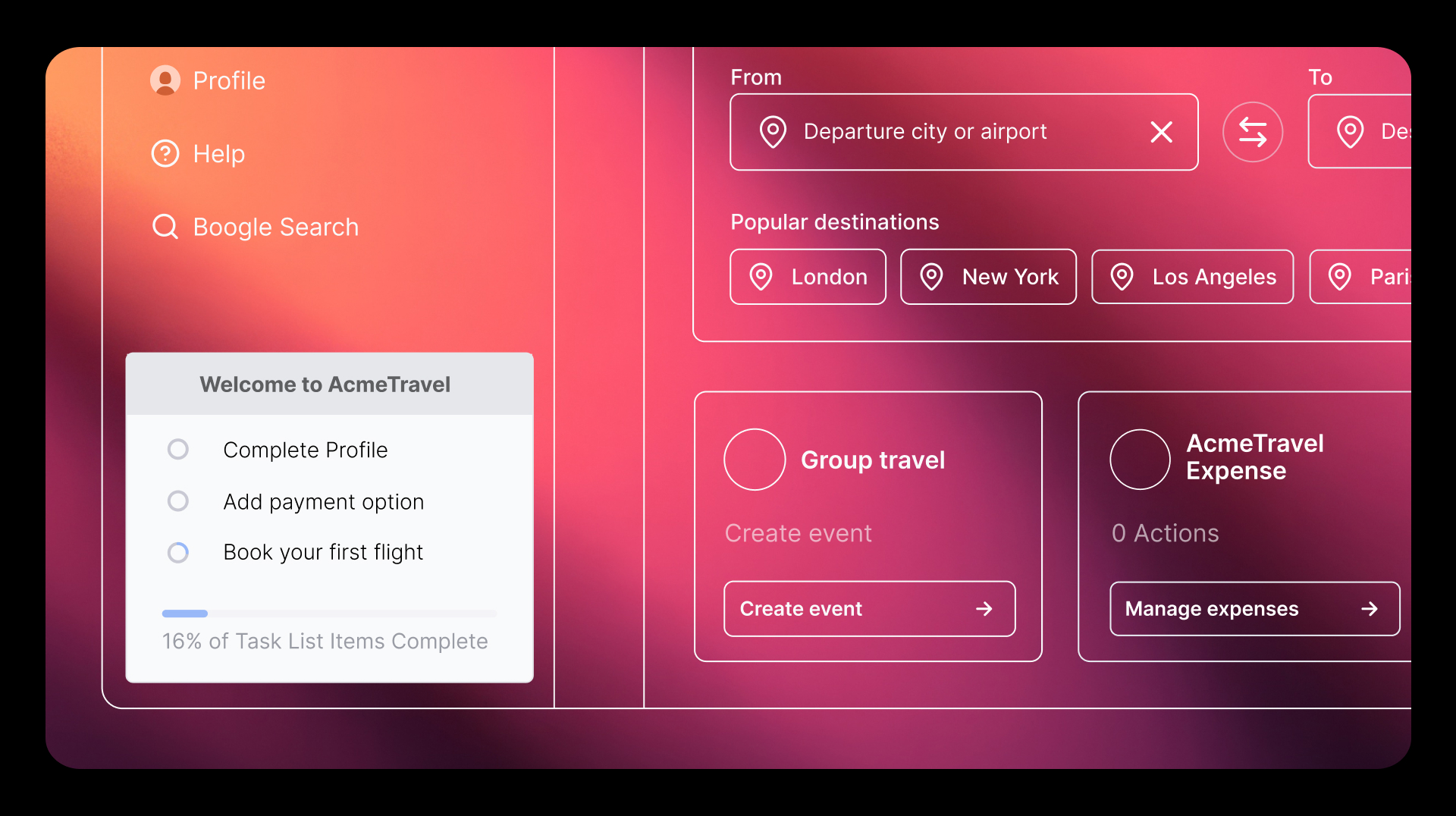It’s no secret that enterprise sales cycles can be uniquely challenging, taking upwards of a year to 18 months by some estimates (not to mention, the sign-off of multiple decision makers) to finally close.
While it’s unlikely that enterprise-sized deals will ever be zero-touch or as easy as casually throwing down the corporate credit card, there are a few simple—and highly effective—ways to streamline the process. Product and sales leaders can help reduce pressure on their enterprise sellers, set future customers up for success, and drive conversions by turning to their products to do some of the heavy lifting.
In this blog—part three of our inefficiency series—we’ll take a closer look at how Pendo helps product and sales teams accelerate growth and expansion, while operating more efficiently at scale.
Product-led growth and expansion
If your sales and account reps—particularly those supporting large, enterprise-scale deals—are spending most of their time explaining basic product functionality or performing standardized demos for prospects, they’re probably feeling pretty frustrated. And from an operational perspective, your sales leaders are likely concerned that their highest performing reps are being forced to dedicate a significant amount of time to routine work—rather than focusing on the highest value work.
The good news is that as a product leader, you can help drive growth and adoption of your product—while helping sellers scale their efforts—by leveraging a few basic product-led approaches.
Letting prospects experience your product before talking to a seller (e.g. through tactics like product tours) enables you to capture product-qualified leads (PQLs).
- A product tour offers prospective customers a guided walkthrough of your product, accessible whenever and wherever it’s most convenient for them.
- PQLs are leads who have had firsthand experience with, and direct exposure to, the value of your product without ever needing to talk to sales.
Not only are PQLs more likely to convert into paying customers more quickly than those who have only been influenced by marketing touches (a.k.a. marketing qualified leads, or MQLs), they’re also more likely to have a smoother onboarding experience once they do eventually become a customer thanks to their familiarity with your product. Plus, capturing analytics on these product tours allows your sales team to understand which areas of the product prospects are most drawn to, so they can better tailor their outreach.
Free trials and freemium plans are also a great way to expose prospects to the value of your product and then learn which features are most interesting to them.
When setting your freemium product’s usage threshold, first turn to product usage data from your paid product to identify average usage patterns. This information will help you set the right thresholds for your free vs. paid experiences—ensuring that you’re delivering value without being too restrictive or giving away too much for free.
You can also use in-app messaging within your free or freemium offerings to plant early seeds for upsell or cross-sell opportunities—for example, if prospects try to access premium areas of the product or expand usage beyond their free limits. These trigger-based in-app communications are not only highly contextual (and therefore effective) for prospects and customers, but are also a helpful way for sellers and customer success managers to automate routine processes—allowing them to expand their reach without sacrificing personalization.
How to spot inefficient growth or expansion in your organization
- Your sales cycles take an extremely long time, with many routine 1:1 touchpoints.
- The only way for prospects to see or experience your product is to physically talk to a seller—causing latency in the sales process, or even discouraging them from proceeding early in the prospect journey.
- Your sellers are spending a substantial amount of time delivering basic, unpersonalized demos to prospects.
- You lack visibility into the behavioral patterns and feature usage of your free trial or freemium users, which makes it difficult to scale expansion programs.
- Your customer success team spends a lot of time on 1:1 expansion-related customer communications.
How to use Pendo to drive efficient growth and expansion
- Use product analytics to understand prospect or customer behaviors within all of your offerings—whether they’re paid, freemium, or free. This data can help you tailor your expansion plays and shore up your free/mium strategy so that the solutions your sellers are pitching are as relevant and useful to each account as possible.
- Use in-app guides to steer users to functionality that will help them achieve their goals, or premium offerings that align with their areas of interest. Automate in-app upsell and cross-sell communications based on behavioral triggers to drive sales with less effort.
Download the inefficiency report to see the full list of inefficiency areas your product can help you solve, and to find out how Pendo can help.


